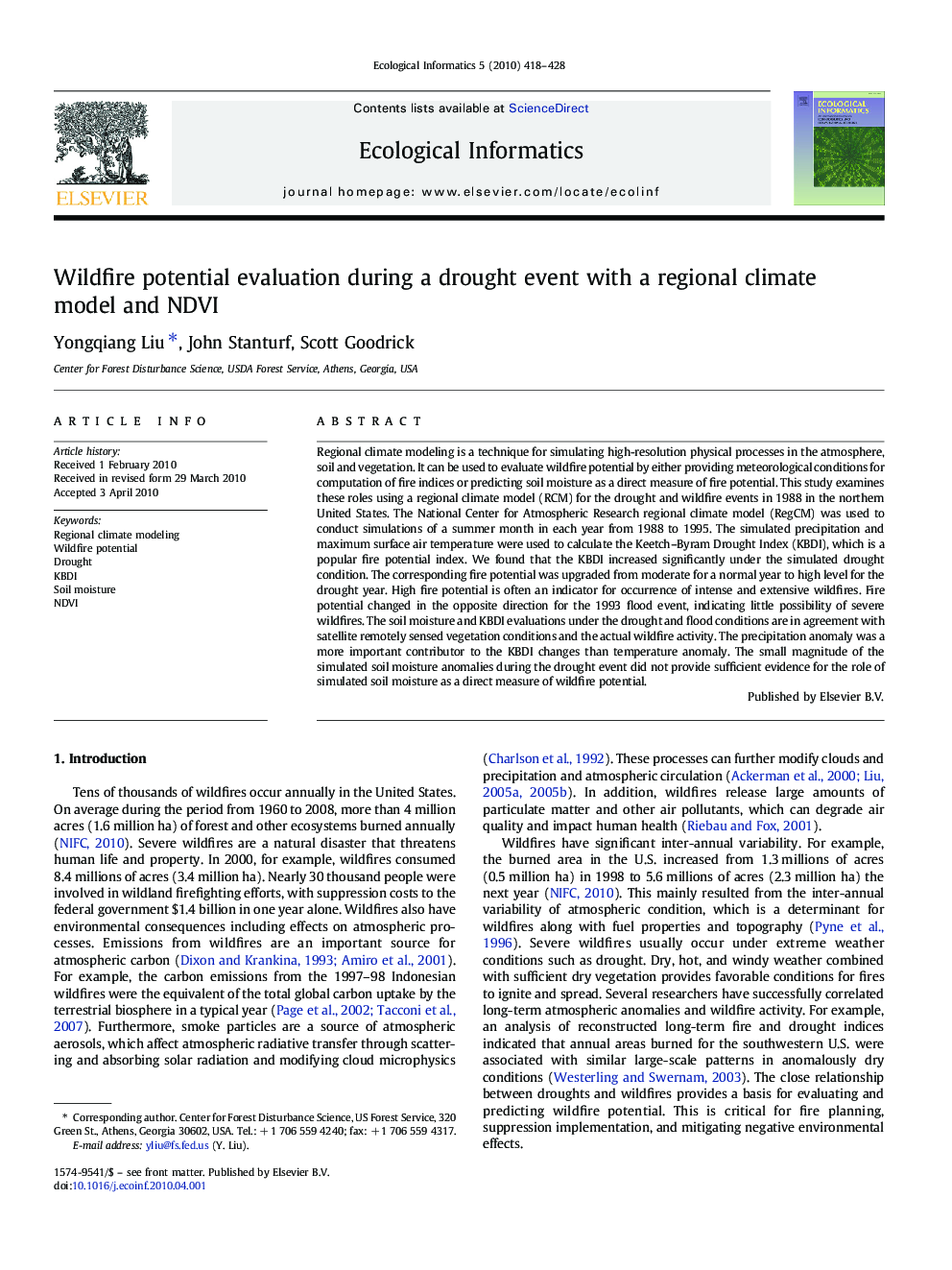| Article ID | Journal | Published Year | Pages | File Type |
|---|---|---|---|---|
| 4375281 | Ecological Informatics | 2010 | 11 Pages |
Regional climate modeling is a technique for simulating high-resolution physical processes in the atmosphere, soil and vegetation. It can be used to evaluate wildfire potential by either providing meteorological conditions for computation of fire indices or predicting soil moisture as a direct measure of fire potential. This study examines these roles using a regional climate model (RCM) for the drought and wildfire events in 1988 in the northern United States. The National Center for Atmospheric Research regional climate model (RegCM) was used to conduct simulations of a summer month in each year from 1988 to 1995. The simulated precipitation and maximum surface air temperature were used to calculate the Keetch–Byram Drought Index (KBDI), which is a popular fire potential index. We found that the KBDI increased significantly under the simulated drought condition. The corresponding fire potential was upgraded from moderate for a normal year to high level for the drought year. High fire potential is often an indicator for occurrence of intense and extensive wildfires. Fire potential changed in the opposite direction for the 1993 flood event, indicating little possibility of severe wildfires. The soil moisture and KBDI evaluations under the drought and flood conditions are in agreement with satellite remotely sensed vegetation conditions and the actual wildfire activity. The precipitation anomaly was a more important contributor to the KBDI changes than temperature anomaly. The small magnitude of the simulated soil moisture anomalies during the drought event did not provide sufficient evidence for the role of simulated soil moisture as a direct measure of wildfire potential.
